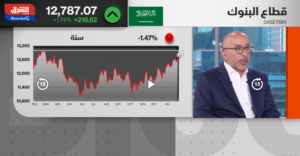Some UAE stocks outperform global indices – and need to make that heard loudly
Some of UAE’s listed blue chips consistently deliver way above global benchmarks
What is the best way to think about a company presenting its business plan about its ideas about the future? At its simplest level, one could adopt the ‘what you see is what it’s worth’ approach.
Then the calculation is simple: add up the assets, subtract the liabilities, divide it by its shares and there you have the price. Another approach would be that the share price is worth whatever the people are willing to pay for it – the Humpty Dumpty method of picking a stock. We know, however, that there is more to a business than what it owns, and therein comes the problems of valuation.
The standard approach to evaluating price is the ‘number, weight and measure’ methodology, which is another way of saying that the most important variables are the change over time and the probabilities of the potential outcomes that could occur as part of arriving at the right value of the share price.
By this metric, investors would have to evaluate how much money any investment choice would deliver to its owners. Wrapped in this decision making is the amount of dividends/buybacks that would accrue to shareholders.
Western stock metrics
It is no surprise that much of the commentary regarding capital markets has been focused on the West and, particularly, with regards to new and emerging sectors over the last few years. We had seen a similar phenomenon in the late 1990s during the dotcom era. Sceptics then were mocked for their shortsighted approach in valuing these companies and, in the recent craze, the skepticism has been laced with disdain yet again.
Commentary therefore on other capital markets such as the UAE has been scarce, despite the fact there have been a number of companies that have handily beaten the Nasdaq/S&P benchmark. Such names (even if we are to exclude the oil and gas sector) include stocks such as IHC, FAB, ENBD, Tabreed and others.
Cushioned against headwinds
It is the performance of these markets that led to the mega IPO offerings (which, despite their fanfare, have been met with disappointing narratives because of their ‘sluggish’ secondary performance). It is critical to remember here that many of these IPOs have near monopolies in the businesses they run and are therefore protected on the downside during the headwinds that we face.
As the offerings increase, investor confidence also rises given increasing liquidity that comes with a rapidly expanding base. There is no substitute in any capital market for a domestic investor base, and that only starts to occur when there is an expanding base of knowledge and information. This then becomes the ‘expanding bullseye, a similar phenomena that was observed with the development of the real estate markets.
When we speak about domestic capital markets, there is no common language or information base being drawn upon, the way it is with the real estate markets. Or for that matter, with foreign markets.
Missing out on local action
The median investor knows far more about the latest moves in the Twitter saga or the Bitcoin collapse than the earnings base that these domestic companies are delivering. Look beneath the hood, however, and you see that in company after company, there is a gradual increase in both the number of retail ownership as well as the percentage owned by foreign nationalities.
This suggests an ongoing shift in both capital and approach in the domestic capital markets. Mathematics, or quantitative reasoning, however can serve as a rhetorical gambit as the ones doing the talking are trying to persuade as much as they are trying to convince, against the backdrop of a populace that is more interested in ‘stories’ than numbers.
However, the story is there and ever so slowly, as people start paying attention to domestic economy dynamics rather than the micro factors that dominate headlines, but pertain to a singular stock. Capital is being allocated to domestic success stories as an expanding population base (buttressed by the number of Golden Visa holders) look for allocating savings towards more robust performers.





